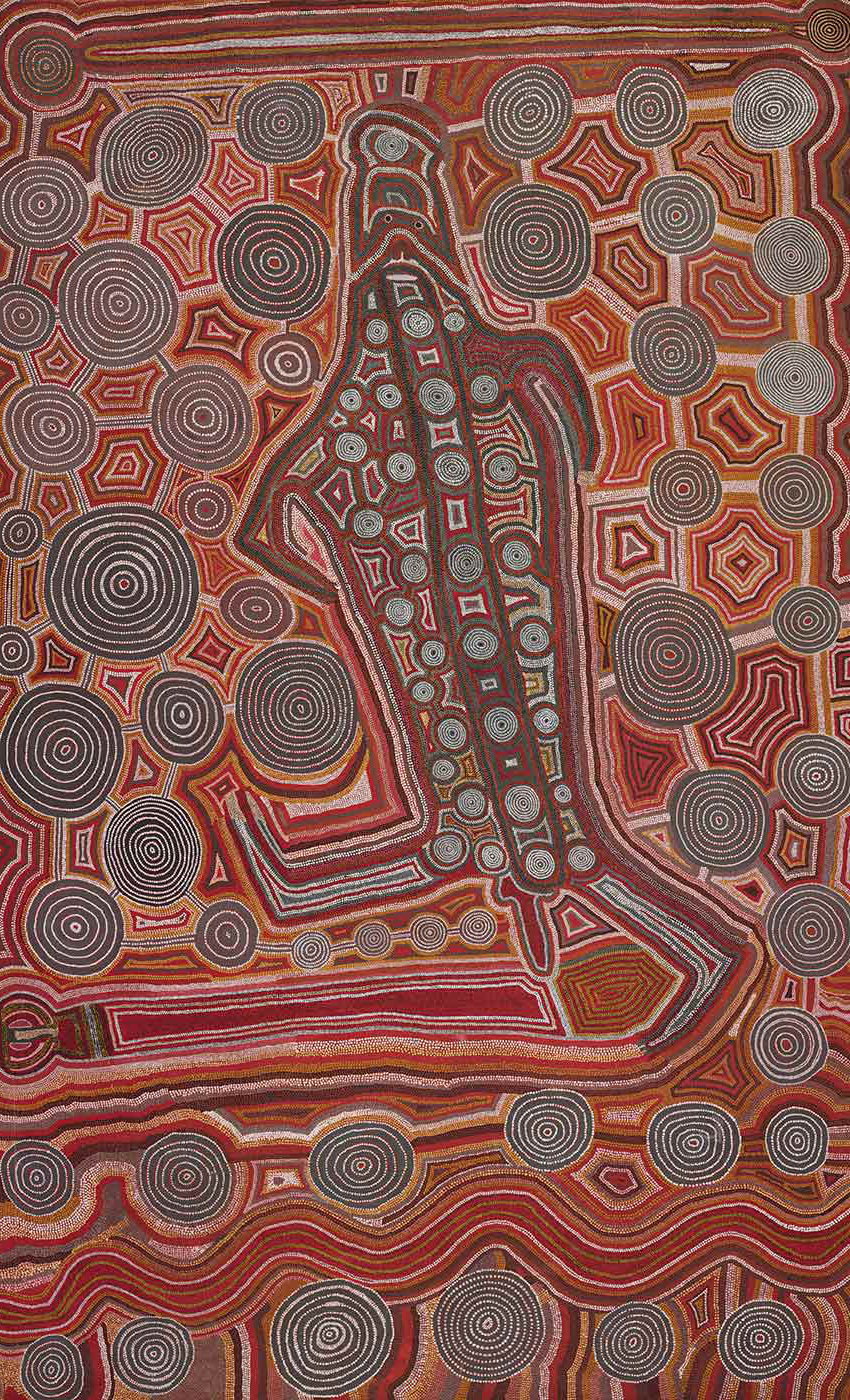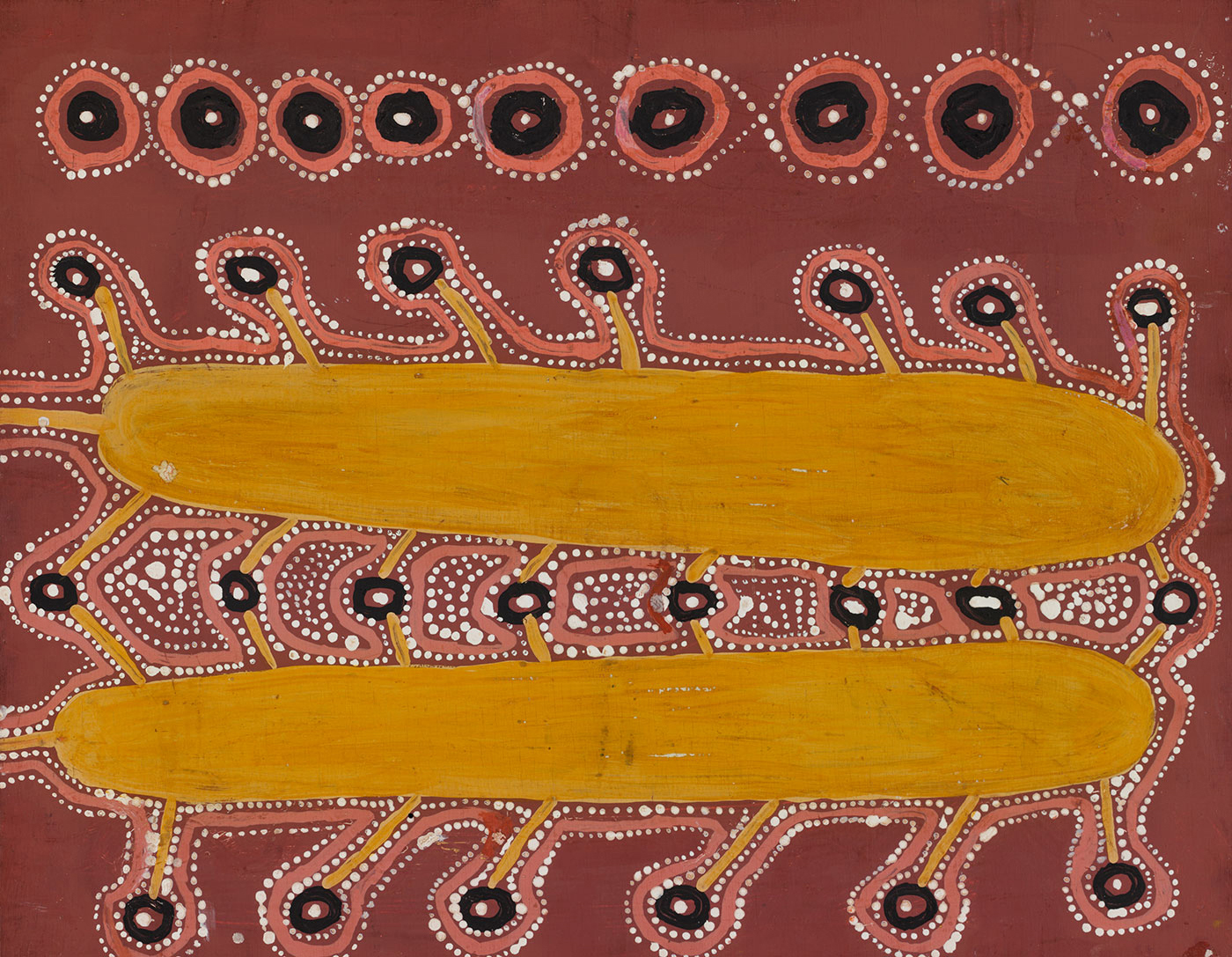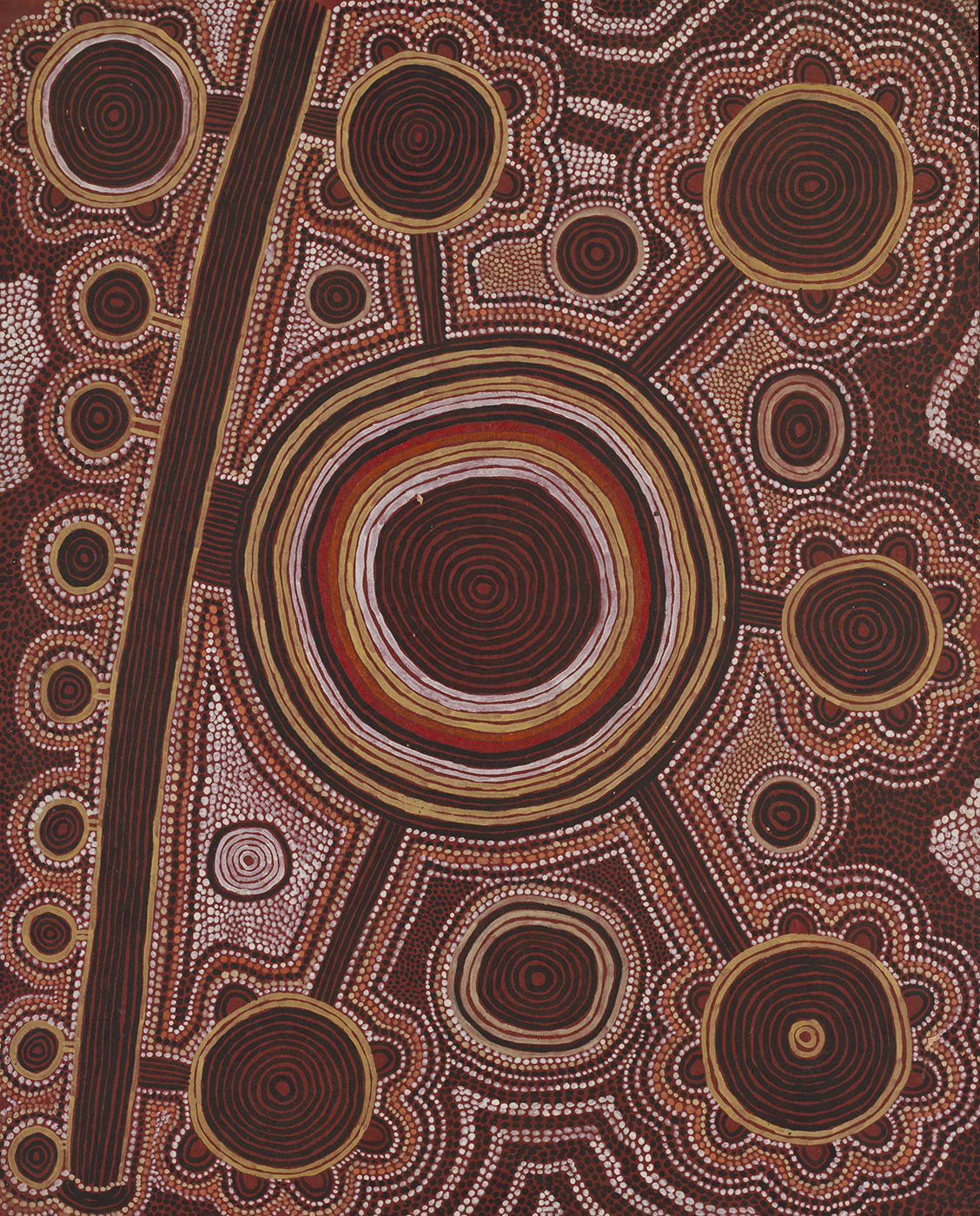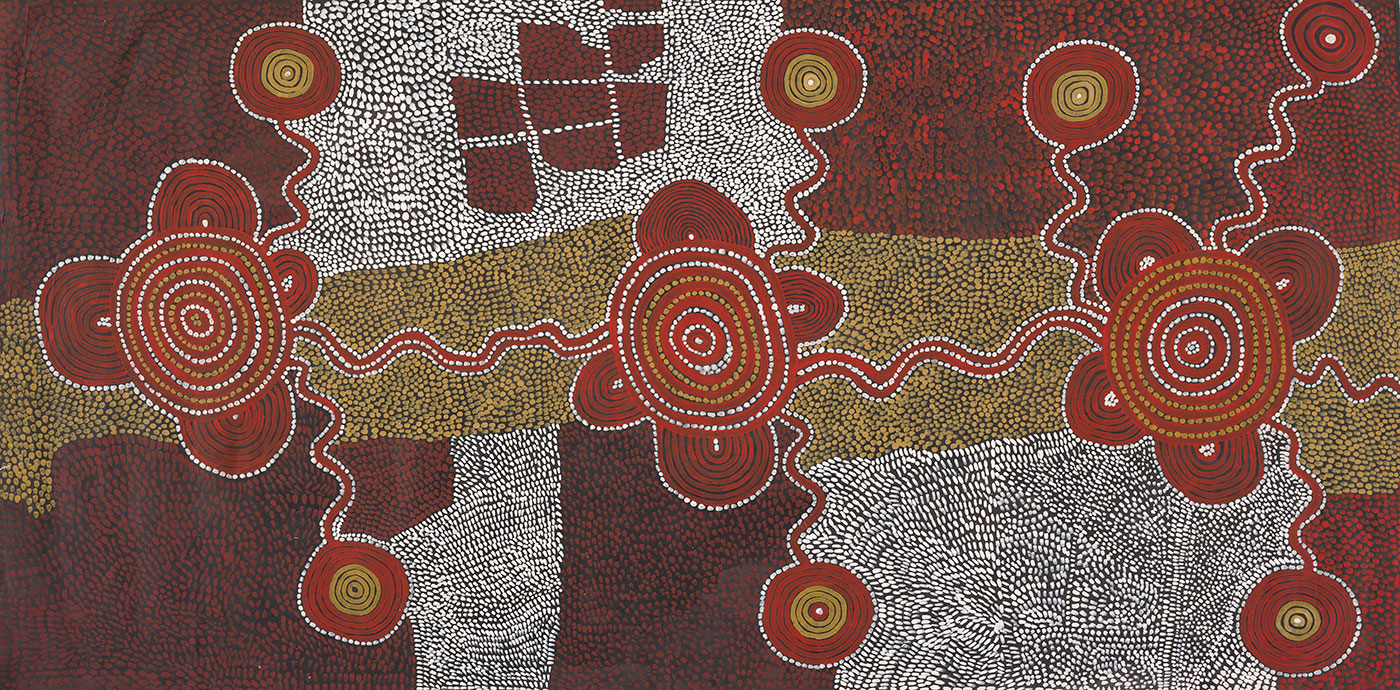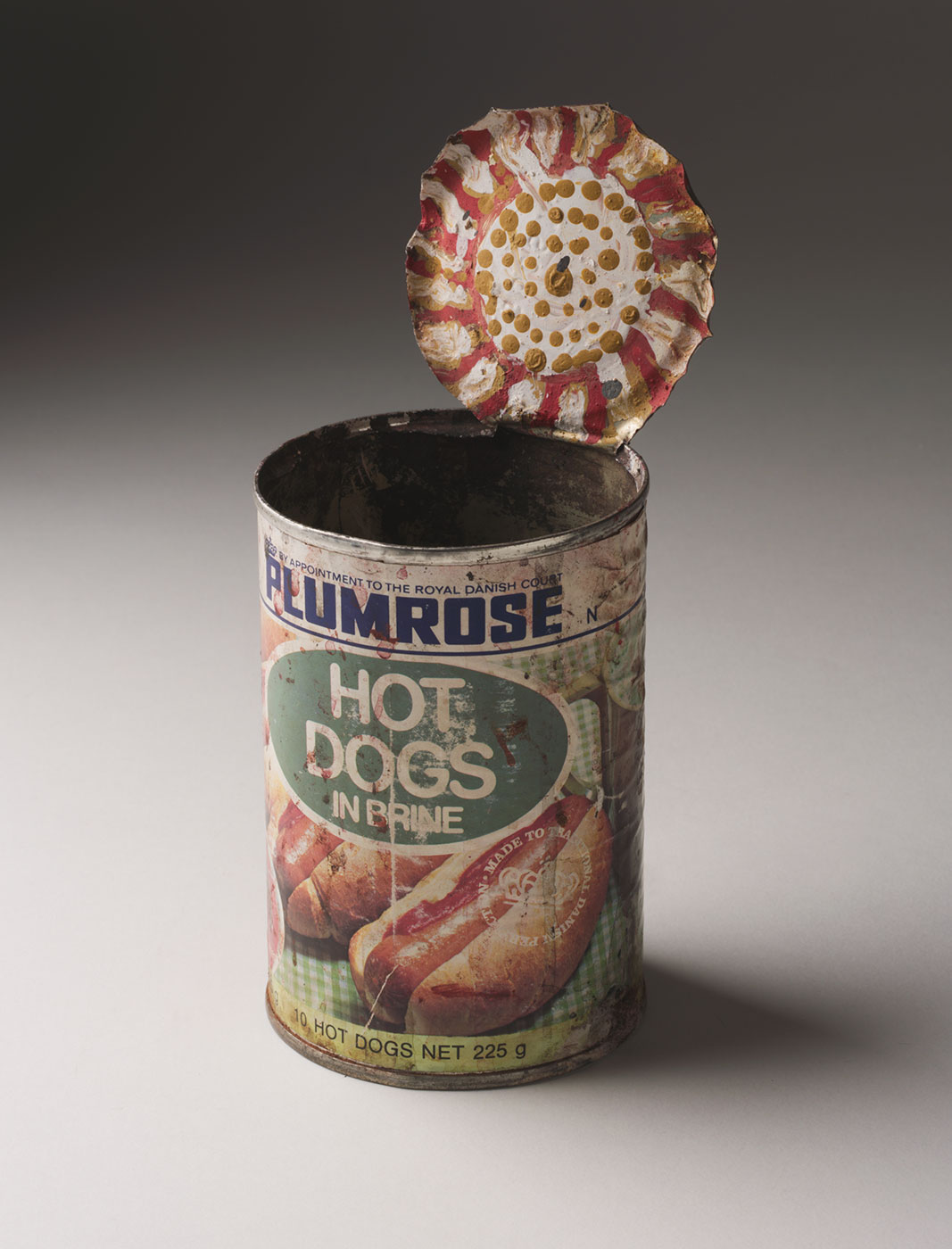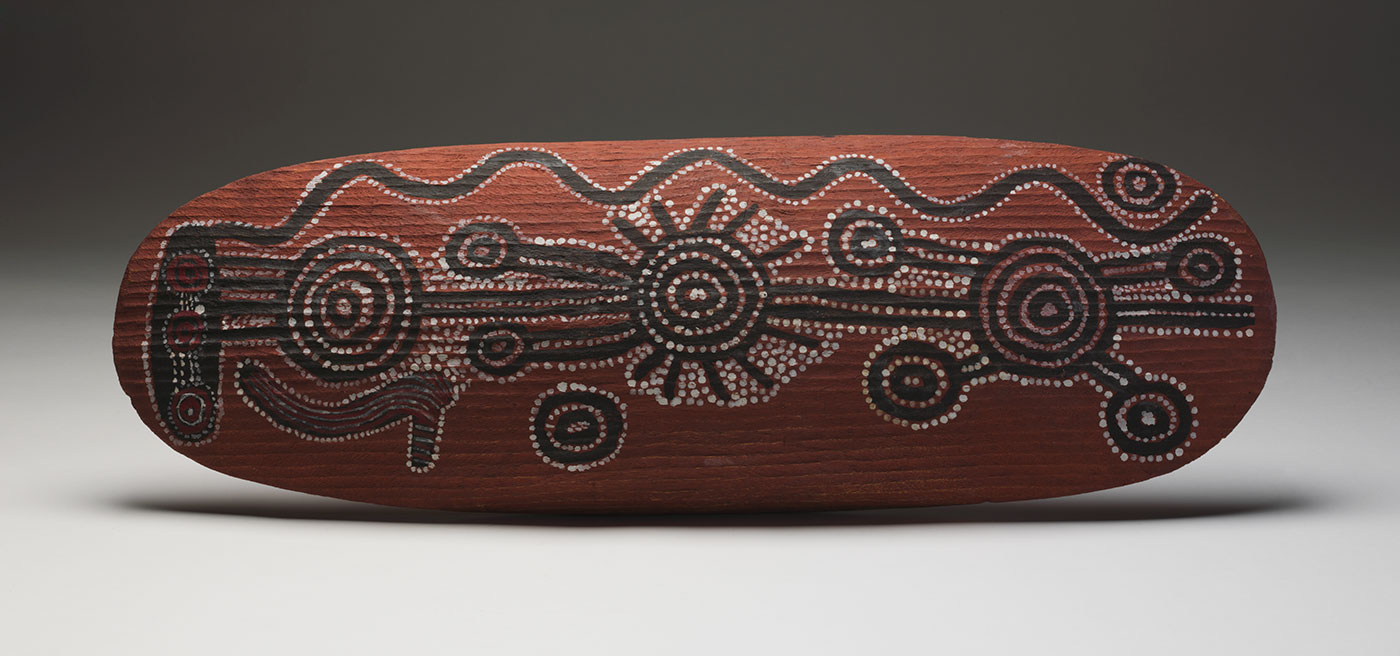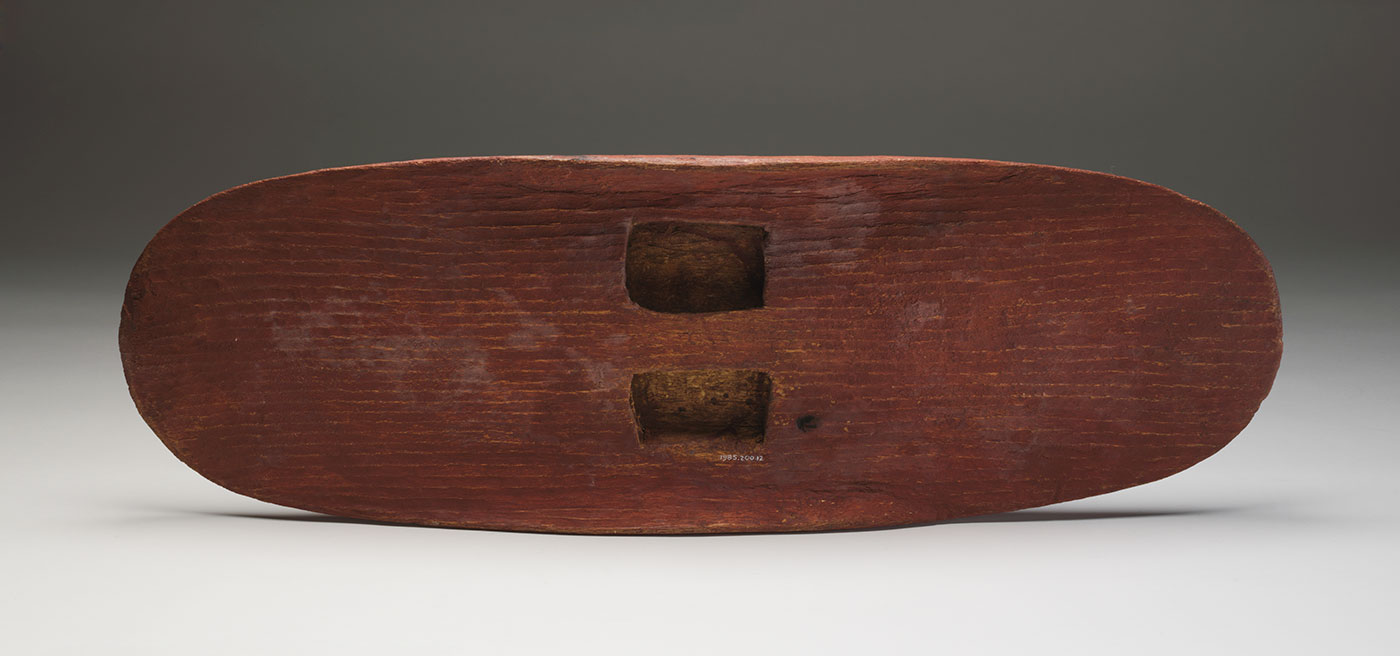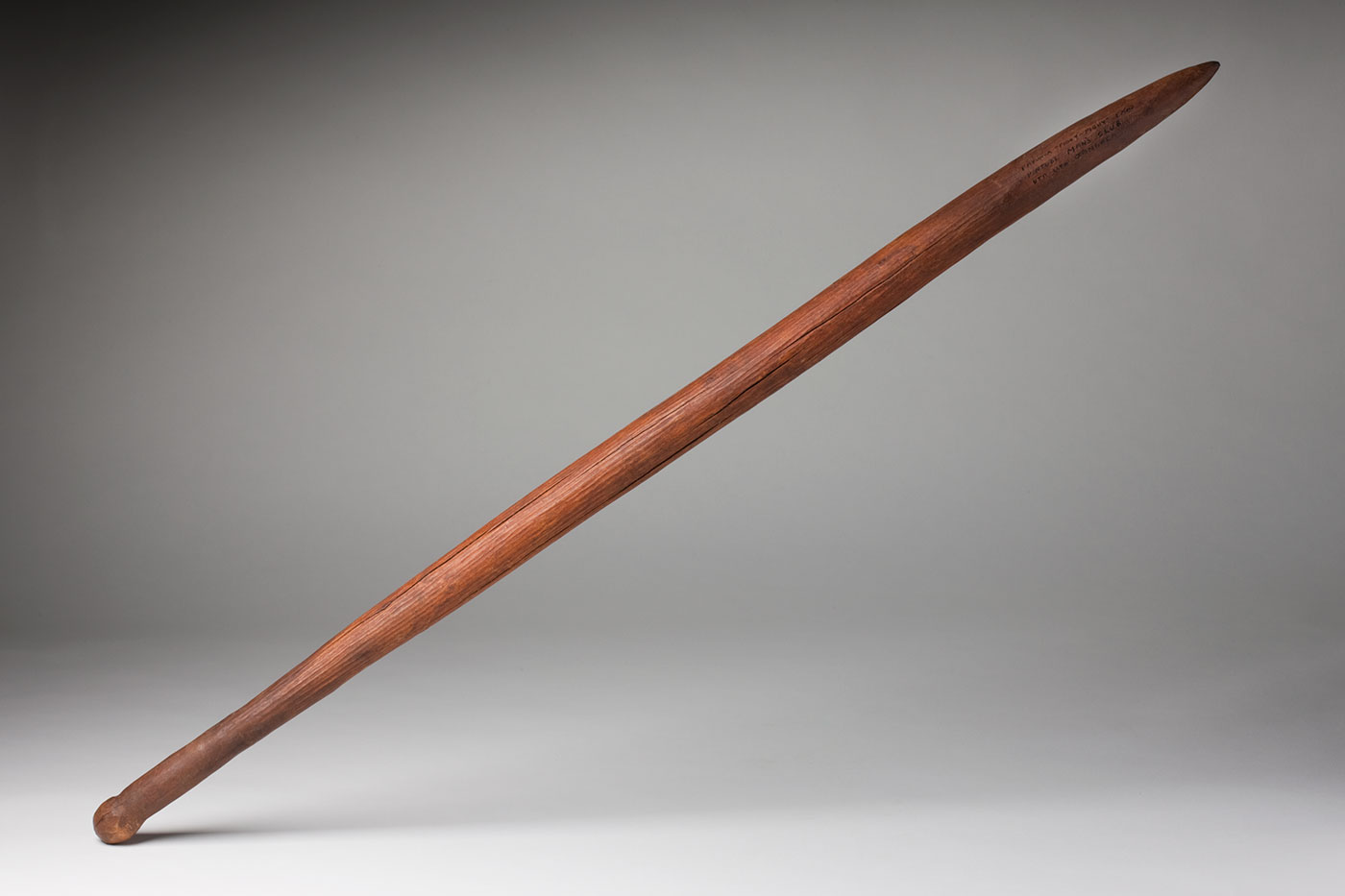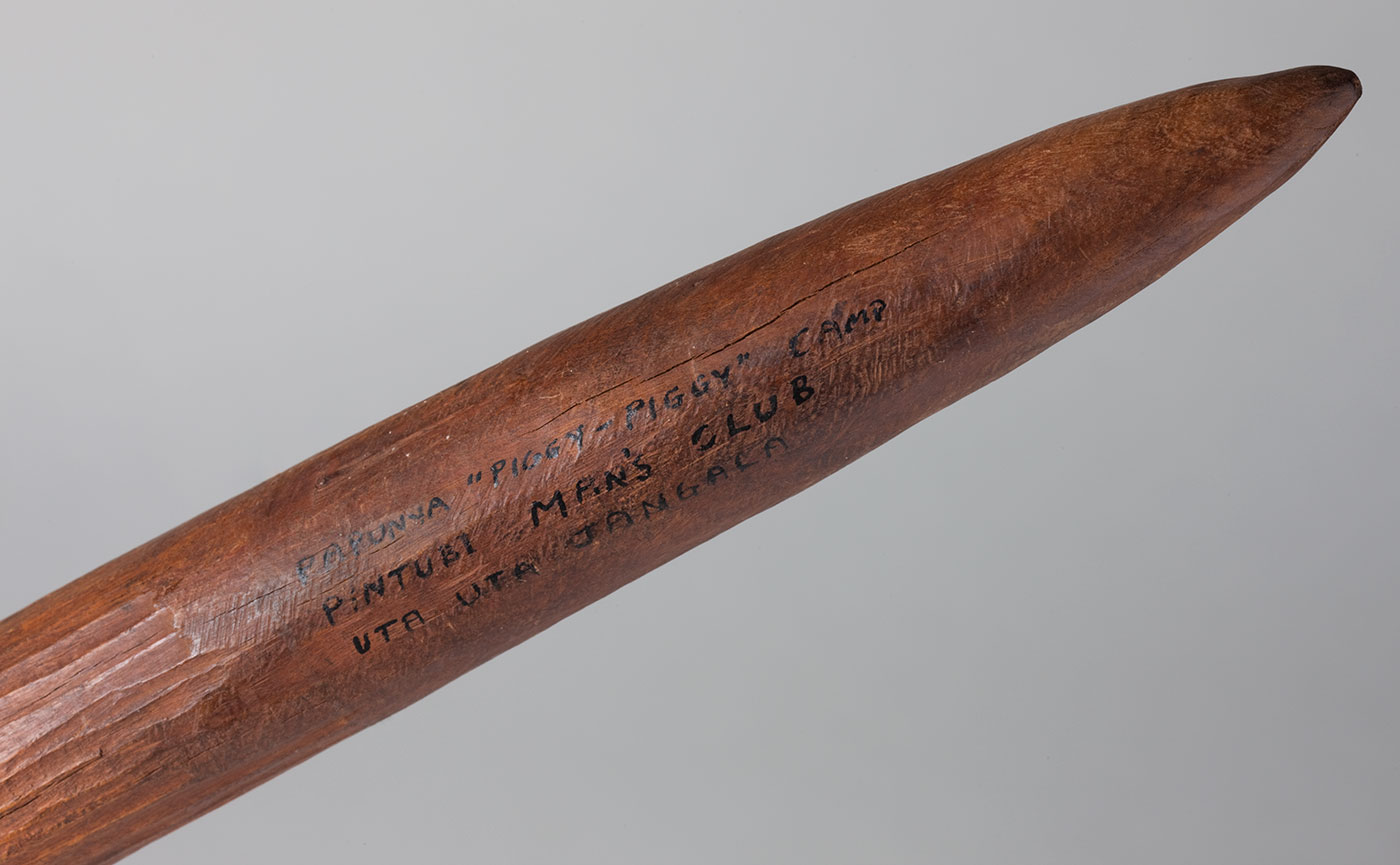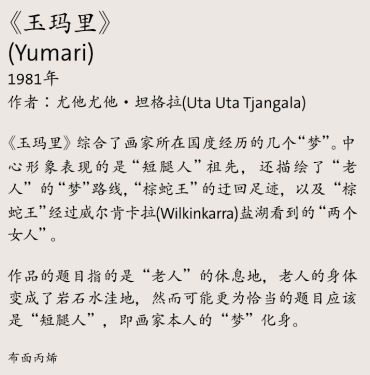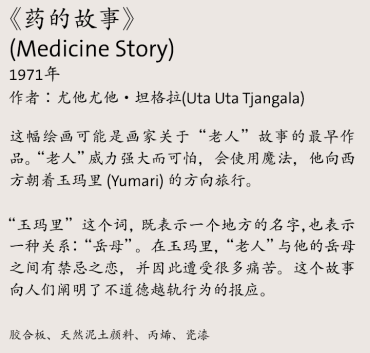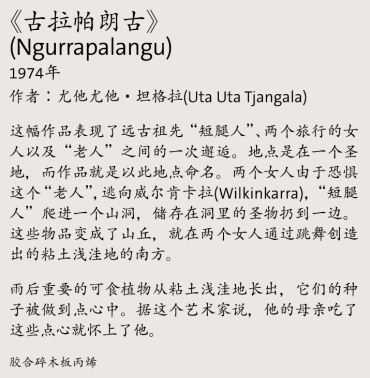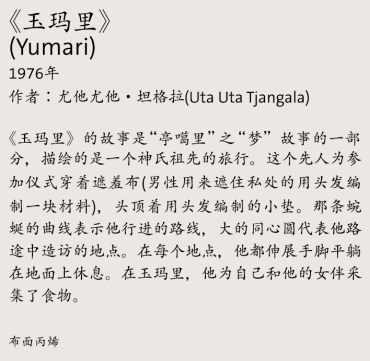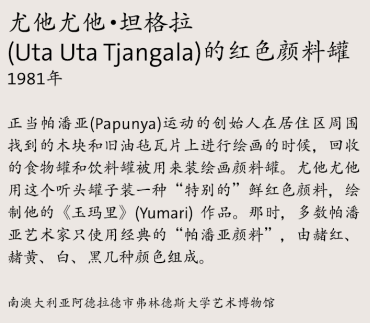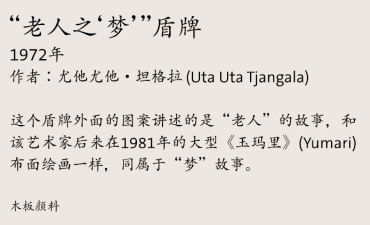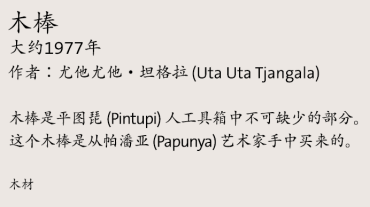Pintupi people
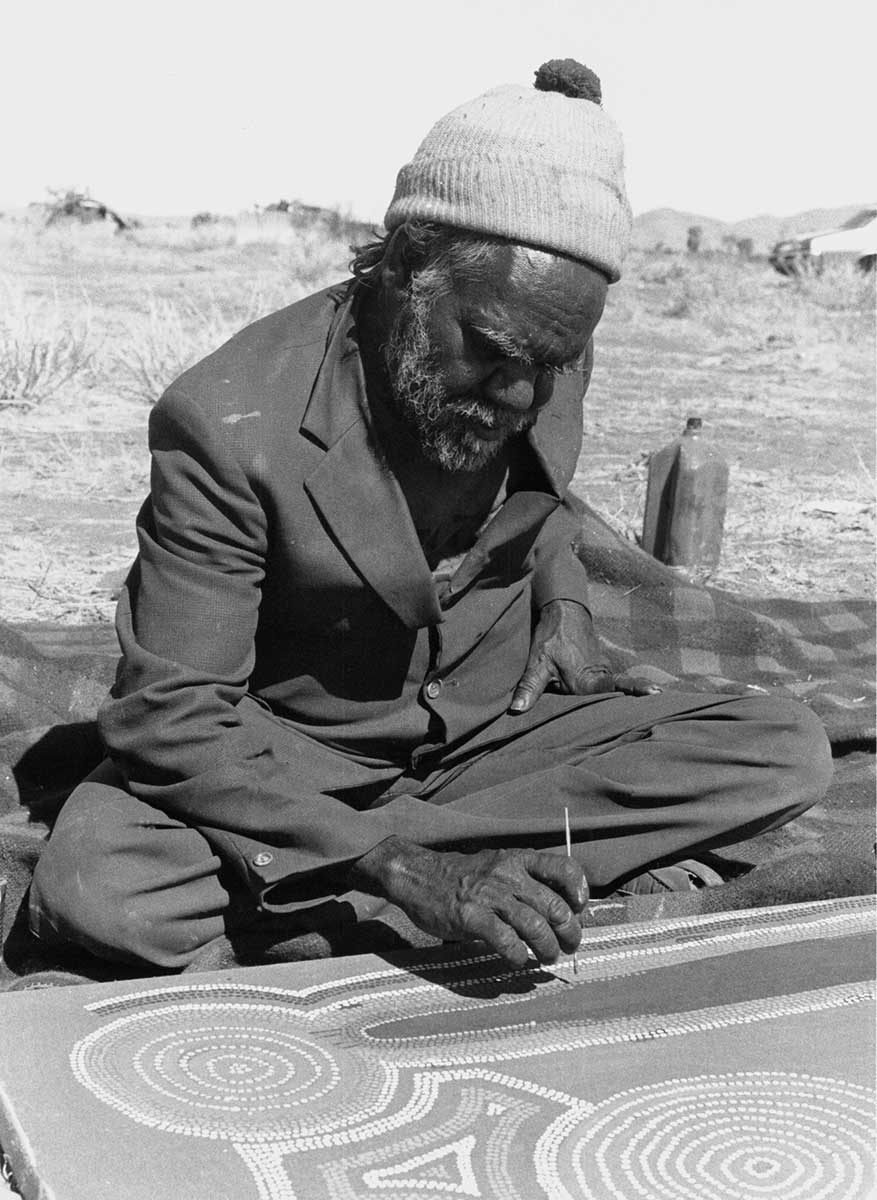
about 1926–90
Uta Uta was connected to the Old Man Dreaming story through the place of his conception. He was one of the original Papunya group of artists and an inspirational figure in the art movement, painting continuously until the late 1980s. In the late 1970s he travelled extensively through the Central and Western Desert and developed a plan with other Pintupi leaders to return to their traditional lands.
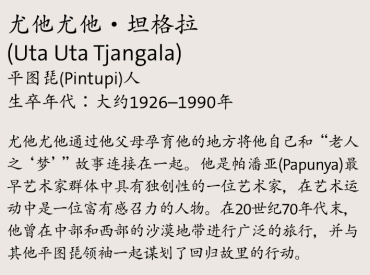
Artworks
Yumari, 1981Yumari combines several Dreamings that pass through the artist's Country. The central figure represents the ancestral being Short Legs. Also depicted are the Dreaming paths of the Old Man, the wavy path of the King Brown Snake, and the Two Women seen by King Brown Snake as he passed the salt lake Wilkinkarra. The painting's title refers to the resting place of the Old Man, whose body formed the rock waterhole, but it is perhaps more appropriately entitled Short Legs, the Dreaming incarnation of the artist himself. |
|
Medicine Story, 1971This painting is possibly the artist's earliest representation of the Old Man story. The Old Man was powerful and dangerous and practised a kind of sorcery. He is shown travelling west towards Yumari. Yumari is both the name of a place and a relationship term meaning mother-in-law. At Yumari, the Old Man had a forbidden liaison with his mother-in-law and suffered painful torment as a result. The story illustrates the consequences of such a moral transgression. |
|
Ngurrapalangu, 1974This painting represents an encounter between an ancestral being called Short Legs, two travelling women and the Old Man ancestral being. The encounter took place at a sacred site, after which the painting is named. The women were frightened by the Old Man and fled towards Wilkinkarra, while Short Legs crawled inside a cave, casting aside the sacred objects stored there. These became a hill to the south of the claypans created by the women's dancing. Important food plants grow from the claypans after rain and their seeds are ground into cakes. According to the artist, his mother ate these cakes and so he was conceived. |
|
Yumari, 1976The Yumari story is part of the Tingarri body of Dreamings and depicts the travels of a sacred ancestral man. The man wears a pubic cover and carries hair-string bundles for ceremonies. The snaking line is his travelling route, and the large concentric circles are the places he visits along the way. At each site he is shown resting, spread-eagled on his back. At Yumari, he collects food to feed both himself and his female companion. |
|
Red paint tin, 1981Just as the founders of the Papunya movement painted on scraps of timber and old linoleum tiles found around the settlement, recycled food tins and drink cans were used as paint holders. This tin was a container for the 'special' bright red paint that Uta Uta demanded for the Yumari painting. Most Papunya artists at this time only used the classic 'Papunya palette' of red ochre, yellow ochre, white and black. |
|
Old Man Dreaming shield, 1972The designs painted on the outside of this shield belong to the story of the Old Man. This was the same Dreaming story, among others, that the artist later represented on his large Yumari canvas, painted in 1981. |
|
Wooden club about, 1977A club was an indispensable part of the Pintupi people's tool kit. This club was bought from the artist at Papunya. |
|
